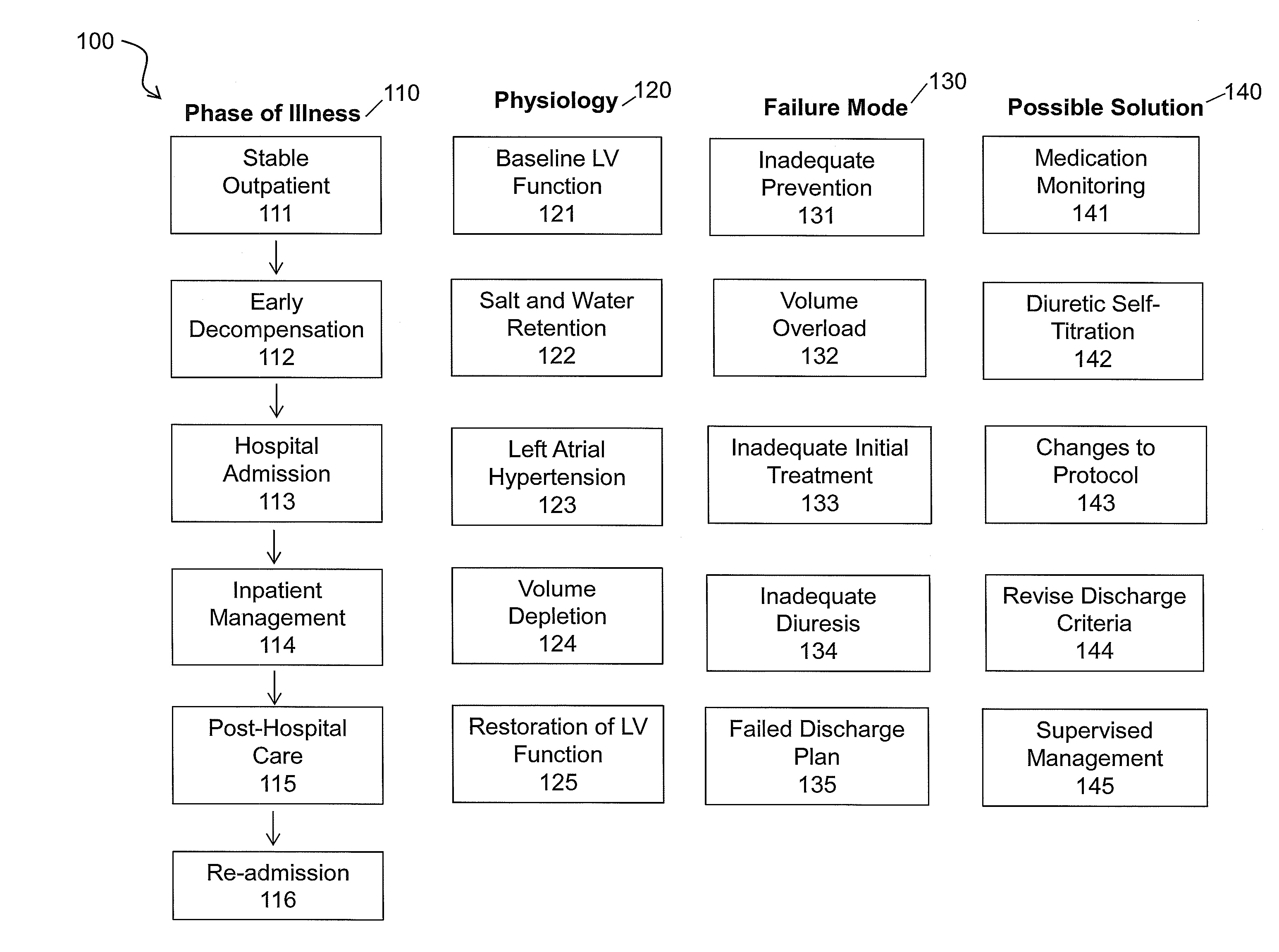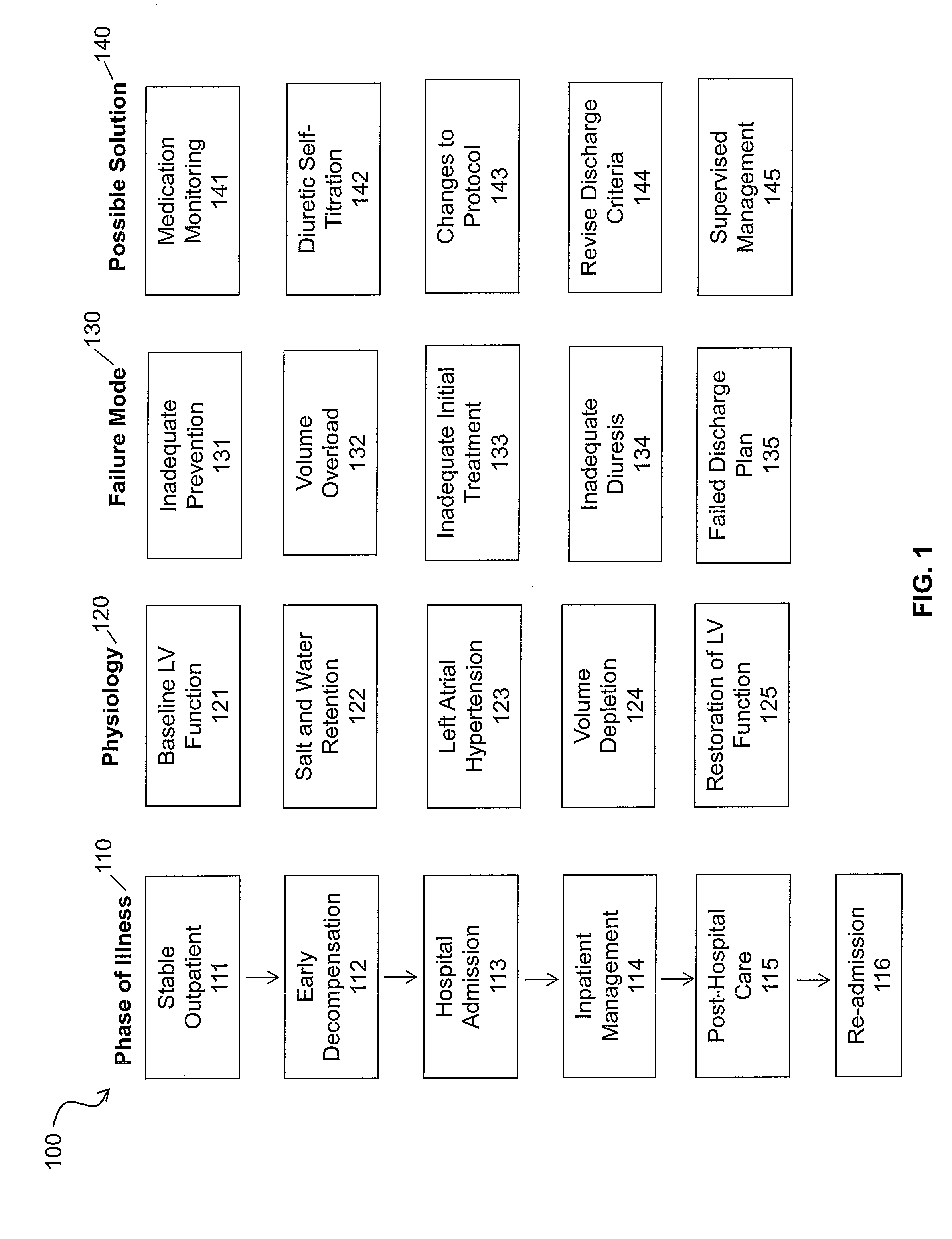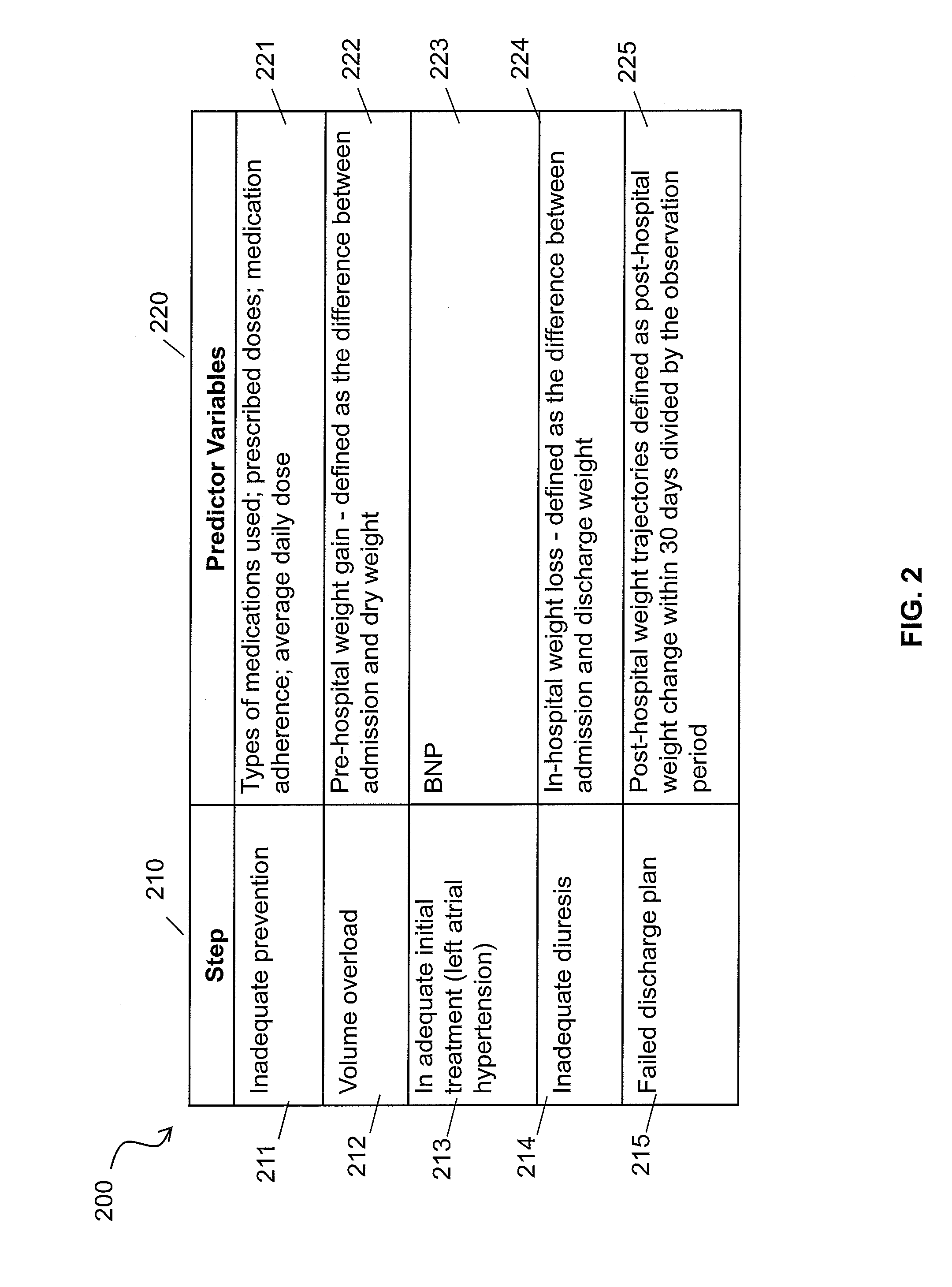System and methods for managing congestive heart failure
a congestive heart failure and system technology, applied in the field of health care, can solve the problems of unsatisfactory assumption, unsatisfactory assumption, and health care costs of medicare of $17 billion, and achieve the effects of improving patient well-being, reducing costs, and optimizing outcomes
- Summary
- Abstract
- Description
- Claims
- Application Information
AI Technical Summary
Benefits of technology
Problems solved by technology
Method used
Image
Examples
Embodiment Construction
[0023]The invention is directed to the management of a diagnosis such as congestive heart failure (CHF) by incorporating competing theories of causality and assigning each patient to one or more failure modes. It analyzes the performance of health care systems with unprecedented detail and identifies patient-specific interventions to optimize their outcomes. It is valuable to any facility interested in improving patient well-being, lowering costs, and avoiding penalties associated with under-performance.
[0024]The invention is based upon the premise that treatment failure can occur in any one of five phases in the pathogenesis of relapse. It identifies all patients with CHF; gathers information from their electronic medical records; synthesizes novel variables from raw data; and creates a profile for each patient describing his / her prior hospitalizations and current treatment. The baseline metrics include the prescribed dose of and adherence to five classes of medications that stabil...
PUM
 Login to View More
Login to View More Abstract
Description
Claims
Application Information
 Login to View More
Login to View More - R&D
- Intellectual Property
- Life Sciences
- Materials
- Tech Scout
- Unparalleled Data Quality
- Higher Quality Content
- 60% Fewer Hallucinations
Browse by: Latest US Patents, China's latest patents, Technical Efficacy Thesaurus, Application Domain, Technology Topic, Popular Technical Reports.
© 2025 PatSnap. All rights reserved.Legal|Privacy policy|Modern Slavery Act Transparency Statement|Sitemap|About US| Contact US: help@patsnap.com



